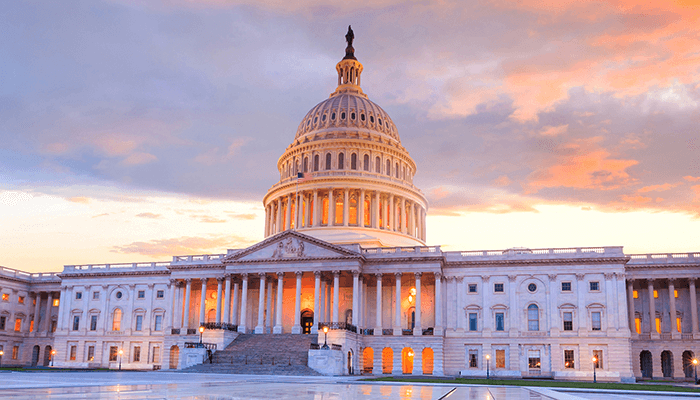Ways & Means Has Plenty of Deficit Reduction Options
The Ways and Means Committee has jurisdiction over nearly $50 trillion of spending and tax breaks that can be tapped for reconciliation, including from Medicare, the Affordable Care Act (ACA or “Obamacare”), the Inflation Reduction Act (IRA), several welfare programs, and spending in the tax code. The wide breadth of pay-fors offers policymakers innumerable ways to pay for a reconciliation bill, and we itemize roughly $3 trillion of illustrative available offsets with relatively broad support.
However, the House reconciliation instructions allow the Ways and Means Committee to increase primary deficits by $4.5 trillion. This is unnecessary given that the entire Tax Cuts and Jobs Act (TCJA) could be extended for about $3.8 trillion – 8 percent of the offsets available to Ways and Means before raising any tax rates. And it is unacceptable given that savings from other committees would cover less than 40 percent of the deficits Ways and Means incurs.
The budget reconciliation process is meant to reduce, not increase deficits. Yet the budget resolution would allow the House to enact $2.8 trillion of deficit increases through 2034, even after accounting for $2 trillion of offsets (worse, the Senate would be allowed to add $5.8 trillion to deficits).
The Ways and Means $4.5 trillion instruction is about $700 billion larger than the fiscal impact of extending all parts of the TCJA currently in effect – despite the fact that there are tens of trillions of dollars in potential offsets that the committee should be considering.
The ACA subsidies, IRA tax credits, and welfare programs in Ways and Means’ jurisdiction together are projected to total nearly $4 trillion from 2026-2034. Medicare is projected to cost nearly $12 trillion. The government does not collect all the tax revenue due each year, resulting in a “tax gap” that we project to be about $7 trillion over the coming decade. Various itemized deductions – including the mortgage, charitable, and other itemized deductions; the 199A deduction for passthrough businesses; and the state and local tax (SALT) deduction for individuals and businesses – will total over $2 trillion. Work-based tax exemptions, such as for employer-provided health insurance and retirement savings, will total about $7 trillion. Explicit tax credits, like the Child Tax Credit and Earned Income Tax Credit, will total almost $3 trillion. Finally, the remaining various tax expenditures amount to another $12 trillion over 2026-2034, according to the Treasury Department. These include tax breaks and exclusions from taxable income, such as for veterans' benefits, capital gains, and for corporate income earned abroad.
All these tax expenditures and spending total nearly $50 trillion through 2034, meaning an 8 percent cut could cover the entire deficit impact of extending the TCJA. An extra 1.5 percent cut could cover the incremental tax cuts envisioned in the reconciliation instructions above TCJA extension.

Paying for priorities and reducing deficits requires difficult choices, but achieving any kind of fiscally responsible goal will be impossible without changes under the Ways and Means Committee’s jurisdiction. Here we provide an illustrative set of approximately $3 trillion in pay-fors across several different budget areas under Ways and Means’ purview – including changes to the IRA, ACA, Medicare, various welfare programs, and the tax code. These are just examples, some of which are also featured among the tens of trillions in additional possible offsets in our Budget Offsets Bank.
Ways and Means Committee Savings Options with Relative Broad Support
| Policy | 2026-2034 Savings |
|---|---|
| Affordable Care Act Credits* | |
| Reduce subsidy benchmark 10% to counter "silver loading" | $150 billion |
| Recapture all ACA overpayments | $100 billion |
| End subsidies above 300% of poverty | ~$100 billion |
| Restrict subsidies based on citizenship | $35 billion |
| Reverse Biden "family glitch" executive action | $35 billion |
| Inflation Reduction Act* | |
| Repeal EV credits (assuming no tailpipe rule) | $200 billion |
| Close EV "leasing loophole" | $50 billion |
| Repeal "tech neutral" energy credits | $100 billion |
| Repeal advanced manufacturing PTC | $75 billion |
| Impose "foreign entity of concern" restrictions to all credits | $100 billion |
| Sunset most credits in 2032 | $100 billion |
| Repeal "domestic content" and "energy communities" bonus credits | $50 billion |
| Repeal energy efficiency credits | $40 billion |
| Disallow "direct pay" and "enhanced transferability" | $50 billion |
| Medicare* | |
| Adopt site-neutral payments | $155 billion |
| Reform Medicare Advantage risk calculations | $125 billion |
| Restrict Medigap plans | $125 billion |
| Reduce payments to 340B hospitals | $75 billion |
| Repeal "bad debts" reimbursements | $55 billion |
| Extend sequester by rebasing payment rates | $45 billion |
| Welfare Programs | |
| Reduce TANF 10% and end contingency fund | $20 billion |
| Reverse Biden SSI public assistance rule | $20 billion |
| End Social Service Block Grants | $15 billion |
| Limit SSI for felons and truants and move to sliding scale benefits based on family size | $10 billion |
| Tax Gap and Loopholes | |
| Close SALT cap workaround | $150 billion |
| End excessive Employee Retention Credit (ERC) payments | $80 billion |
| Close "roundtripping loophole" | $70 billion |
| Require parent and child SSNs for CTC/EITC | $30 billion |
| Tax Expenditures and Parameters* | |
| Expand SALT cap to businesses | $400 billion |
| Freeze all tax parameters for one year | $400 billion |
| End Head of Household filing status | $300 billion |
| Limit charitable deduction to cash-equivalent donations | $220 billion |
| Repeal last-in-first-out and related accounting rules | $100 billion |
| Repeal "qualified small businesses stock" tax exclusion | $80 billion |
| Phase out current SALT and mortgage deductions above $1 million income | $50 billion |
| Raise stock buyback tax | $65 billion |
| End tax exemption for new qualified private activity bonds | $45 billion |
All numbers rounded to the nearest $5 billion. Most estimates are based on Congressional Budget Office (CBO) scores and figures.
*Options overlap and cannot be directly added together
The ACA subsidies and IRA credits will total a combined $2 trillion over the next decade. Lawmakers could save hundreds of billions by more aggressively recovering ACA overpayments, strengthening ACA means-testing, closing the electric vehicle "leasing loophole," or sunsetting the IRA tax credits in 2032, instead of following the flexible phase-out in current law.
Medicare is also under Ways and Means’ jurisdiction (jointly with Energy & Commerce) and will cost nearly $12 trillion over the next decade. Common-sense reforms such as adopting site-neutral payments, improving how Medicare Advantage calculates risk adjustments, and restricting costly Medigap plans could save hundreds of billions – and trillions more could be saved with more aggressive reforms.
The Ways and Means Committee oversees miscellaneous welfare programs like Supplemental Security Income (SSI), Temporary Assistance for Needy Families (TANF), unemployment insurance, family support and foster care. Limiting felons and truants from receiving assistance through these programs or cutting their overall budgets can save tens of billions.
The “tax gap” is the difference between what the government theoretically should collect and what it actually collects from taxpayers, and is exacerbated by the gaming of loopholes in the tax code. Closing the roundtripping loophole, by which corporations move income abroad and then bring it back at lower tax rates, or shutting down the various workarounds states have enacted to help their citizens to get around the SALT deduction cap would save hundreds of billions.
Tax expenditures are the numerous explicit and implicit tax breaks and tax preferences throughout the tax code, which total in the tens of trillions of dollars over the coming decade. Even small moves to close or limit these tax breaks, deductions, credits and workarounds can raise trillions of dollars in new revenue. For example, repealing "Last-in-First-Out" accounting would move to more accurate accounting methods, while limiting the charitable deduction to cash-equivalent gifts would prevent donors from receiving a double benefit from donating untaxed capital gains.
If the Ways and Means Committee does not include fiscally responsible provisions to rein in deficits, it would be a break with precedent. The original TCJA contained numerous base-broadeners and tax simplifications that offset some of the taxes cut. The committee should enact similar tax provisions again or cut spending within its jurisdiction. The range of offsets is wide and the only way to have pro-economic growth tax cuts is to pay for them. Without fiscal responsibility, a tax cut package risks harming Americans’ incomes over the medium and long term.
In the context of near-record and growing debt and interest costs, there is simply no reason for a fiscally responsible Congress to use the entire $4.5 trillion instruction for Ways and Means.


